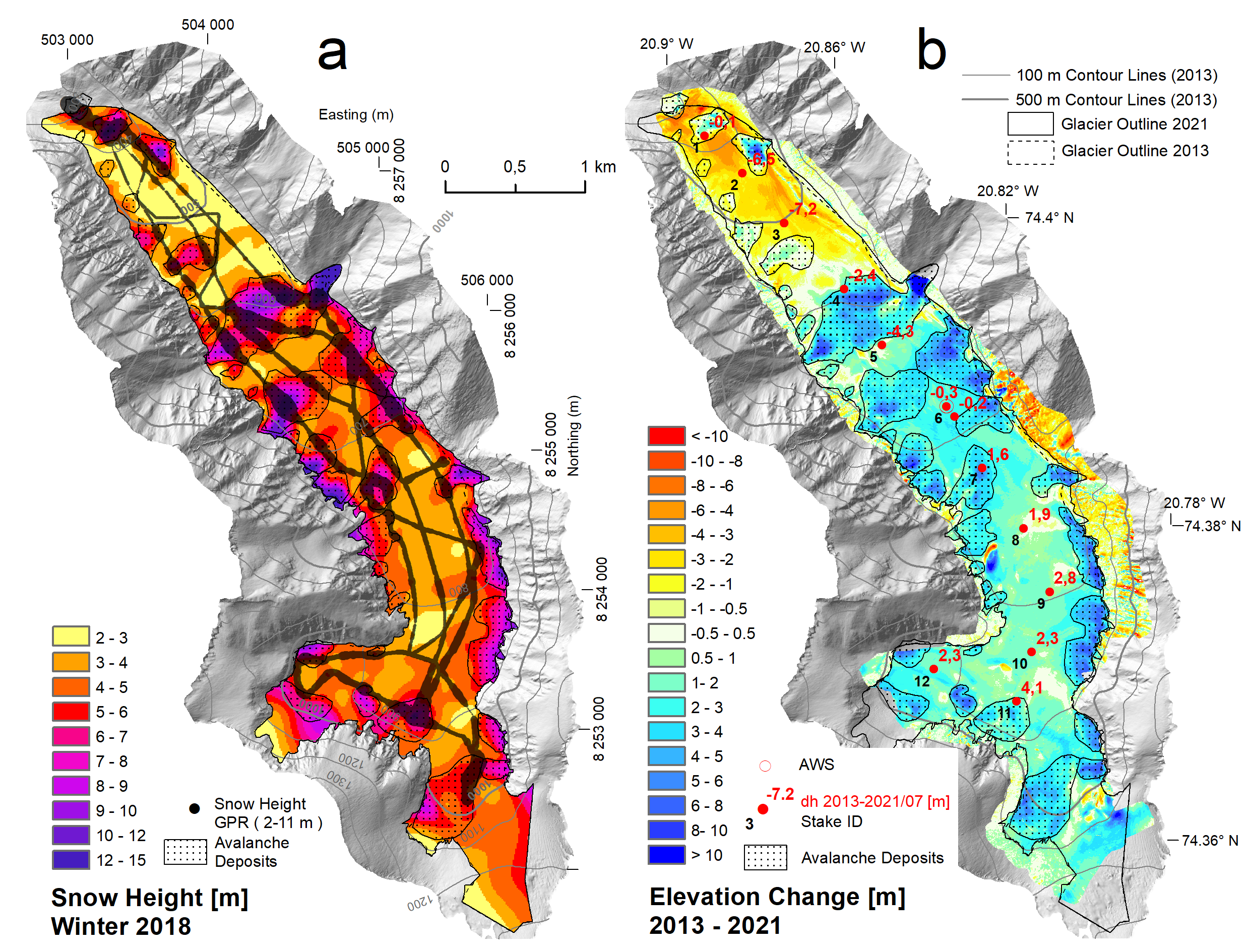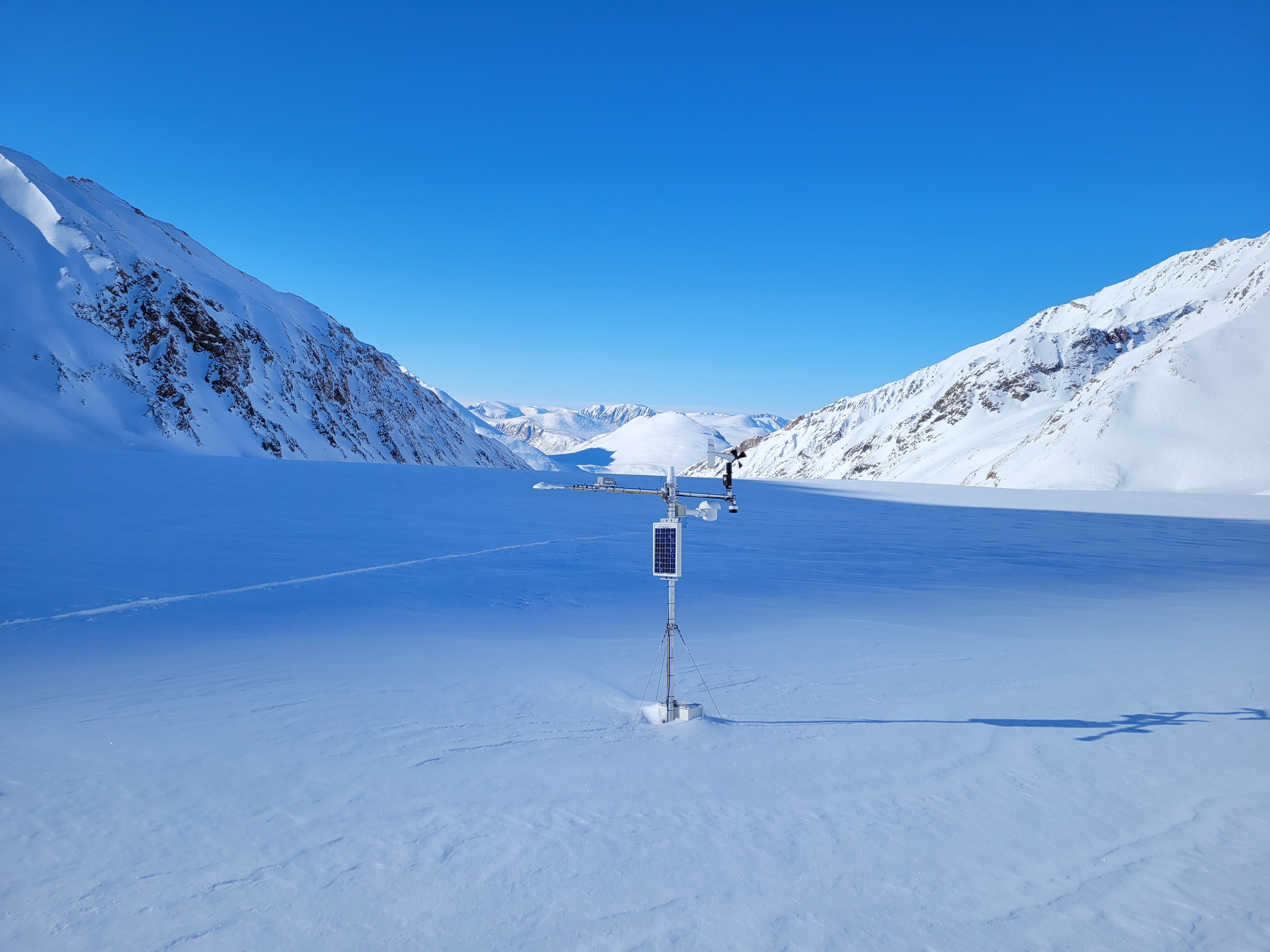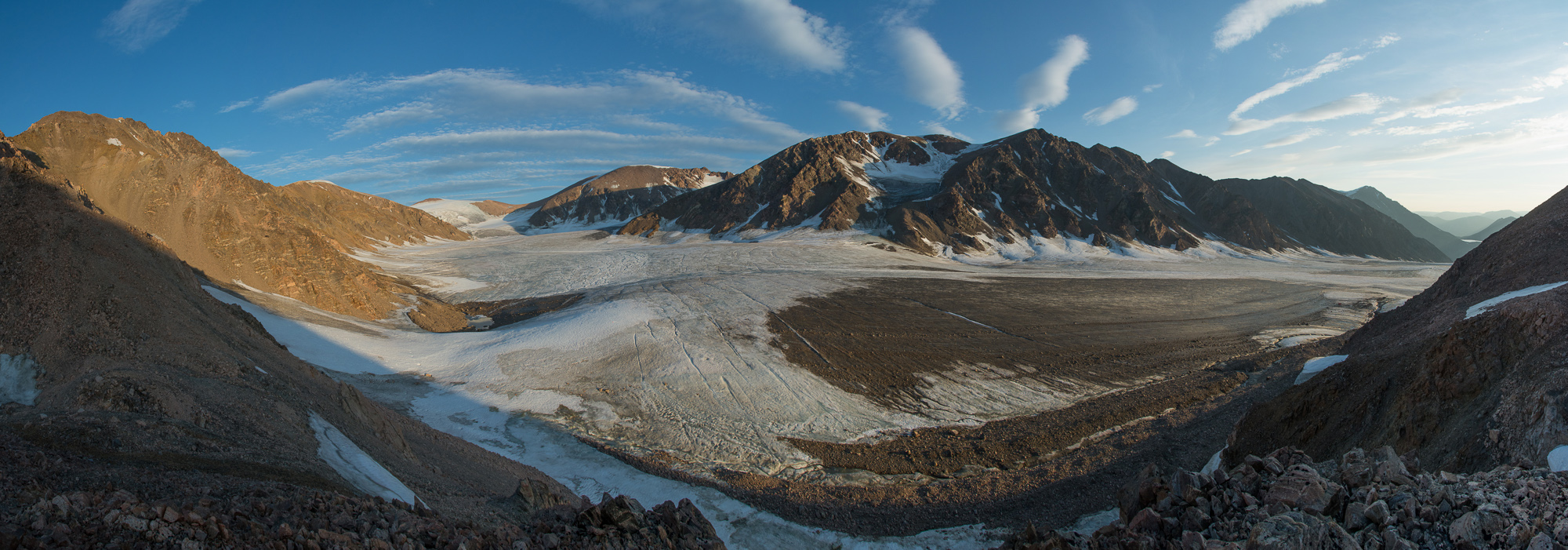Avalanches influence the mass balance of glaciers in Greenland
Greenland's glaciers are losing mass faster and faster due to global warming. Regionally, however, large amounts of snow in winter lead to a slowdown in mass loss. A research team from GeoSphere Austria, together with international partners, has now shown that a single snowfall event in February 2018, followed by strong avalanche activity, led to a mass gain of the glacier in the measurement period 2013 to 2021. The results of the study contribute to a better understanding of individual processes between climate change and glacier changes in Greenland.
Due to global warming, large parts of the Arctic glaciers are melting every year, mainly because the melting period lasts longer and longer in summer. However, the warmer air also transports more moisture to the far north, which leads to more snowfall in some regions and thus to an increase in glacier mass.
‘We know from satellite data that this effect has slowed down mass loss somewhat in the last decade, especially on the east coast of Greenland,’ says Bernhard Hynek, glacier researcher at GeoSphere Austria, ’here the glaciers gained mass in places at higher altitudes, while they lost mass at lower altitudes and overall in the long term. We were able to provide direct evidence of a specific example for the first time: Our measurements and analyses on the relatively small Freya Glacier in northeast Greenland have shown that the large amounts of fresh snow in February 2018 and the numerous avalanches associated with it have compensated for the long-term melting in the short term and have even led to a slightly positive mass balance in the period 2013 to 2021, i.e. a slight increase in glacier mass.’
For the first time, the GeoSphere Austria team succeeded in quantifying the impact of avalanche events on the mass balance of a glacier using direct measurements. The results were recently published in the scientific journal ‘The Cryosphere’.
In future, the data can be used in climate models, among other things, to estimate the melting rates of Greenland's glaciers and their contribution to sea level rise even more accurately.
Greenland is covered by the Greenland Ice Sheet, a mighty ice sheet up to three kilometres thick. In addition, there are more than 20,000 comparatively small glaciers in the coastal mountains, so-called peripheral glaciers. Although the peripheral glaciers only account for four per cent of Greenland's ice-covered area, their share of Greenland's current contribution to sea level rise is comparatively high at eleven per cent. This is because smaller glaciers react more quickly to climate change.
Due to their remoteness, only six of these approximately 20,000 peripheral glaciers are currently being continuously monitored by direct measurement programmes, two of them in the immediate vicinity of the Zackenberg research station in north-east Greenland, the world's largest national park.
The measurement programmes on the Freya Glacier, a five square kilometre coastal mountain glacier, and on the much larger A.P. Olsen Ice Cap (300 square kilometres) were initiated as part of the International Polar Year 2007/08. The monitoring is carried out in cooperation between GeoSphere Austria, the University of Graz and the Geological Survey of Denmark (GEUS) and includes point measurements of the increase or decrease in glacier mass, flow velocity and volume changes. In addition, several automatic weather stations and automatic cameras are operated on the glaciers, which transmit data in real time.
The annual mass change is only measured at a few points and then extrapolated to the entire glacier using a model. The results of this extrapolation are checked every five to ten years by actually measuring the volume change of the entire glacier in order to avoid systematic deviations. These detailed control measurements were carried out on the Freya Glacier in the summers of 2013 and 2021.
The aim of the long-term monitoring at Freya Glacier is to better understand the relationship between climate change and glacier changes in north-east Greenland and to quantify the mass balance of the processes involved. It has already been surmised that avalanches contribute positively to the mass balance at Freya Glacier, but it has not yet been possible to quantify the magnitude.
‘In April 2018, we succeeded for the first time in directly measuring the mass input of the numerous avalanches in February 2018 using georadar,’ explains glaciologist Hynek.
In mid-February 2018, one and a half metres of snow fell on the Freya Glacier within five days. That's more than in some entire winters. As a result, several avalanches, some of them very large, descended from the side slopes onto the glacier. The avalanches covered more than a third of the glacier's surface area and led to local snow depths of over 15 metres.
In April 2018, the research team used a snowmobile to tow a georadar (which analyses the subsurface) across the glacier surface and thus recorded the distribution of snow depths very precisely. On average, there was 4.8 metres of snow on the glacier (three metres more than the long-term average), with avalanches contributing around 0.8 metres, i.e. almost 20 percent of the total winter balance.
The long-term effects of this short-term event in 2018 were shown in comparison with measurements in 2013 and 2021:
From 2013 to 2021, an average change in height of the Freya Glacier of +0.7 metres water column was calculated. This means that the glacier has gained an average of nine centimetres in thickness per year. By comparison, the glacier lost thirty centimetres in thickness per year between 2007 and 2013. The Greenland ice sheet is losing around 11 centimetres in thickness per year.
The spatial distribution of the changes in altitude shows that the extraordinary amounts of snow in 2018 and, above all, the subsequent avalanches contributed significantly to this positive mass balance.
The avalanche snow from 2018 was still visible in many places on the glacier surface in the following years, with individual remnants still visible in the summer of 2024.
‘Although almost all glaciers in Greenland are currently losing mass due to global warming, an increase in winter precipitation on some glaciers, especially on the east coast of Greenland, can also lead to short-term increases in mass,’ says glacier expert Bernhard Hynek from GeoSphere Austria, ’the better we understand these processes, the better the consequences can be estimated with climate models, for example the rise in sea level.’



